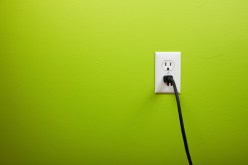Understanding TV Signal Strength: A Guide to Optimizing Reception in Your Area
In today’s digital age, television remains a popular source of entertainment for many households. However, poor TV signal strength can often lead to frustrating viewing experiences. If you find yourself constantly struggling with pixelated images or interrupted broadcasts, understanding TV signal strength in your area is essential. In this article, we will explore what TV signal strength is and provide you with practical tips to optimize the reception in your area.
What is TV Signal Strength?
TV signal strength refers to the measure of how strong the broadcasted signals are in your location. It determines the quality and reliability of the television channels you receive. The signal strength depends on various factors such as distance from the broadcasting tower, obstacles like buildings or trees, and interference from other electronic devices.
Factors Influencing TV Signal Strength
Distance from Broadcasting Tower: The further away you are from the broadcasting tower, the weaker the signal strength will be. This is because signals gradually lose their intensity over distance.
Obstacles: Buildings, trees, and other physical obstructions between your location and the broadcasting tower can block or weaken TV signals. Tall structures or dense foliage can significantly impact your reception quality.
Interference: Electronic devices such as cordless phones, Wi-Fi routers, and microwave ovens can cause interference that affects your TV signal strength. Additionally, atmospheric conditions like heavy rain or thunderstorms may also disrupt signals temporarily.
Tips for Optimizing TV Signal Strength
Find Your Nearest Broadcasting Tower: Identifying the nearest broadcasting tower to your location is crucial for optimizing your TV signal strength. Numerous websites and smartphone apps provide this information by simply entering your zip code or address.
Adjust Your Antenna Position: If you use an antenna to receive over-the-air television broadcasts, ensure it is properly positioned towards the broadcasting tower for optimal reception. Experiment with different angles and heights to find the best signal strength.
Minimize Obstructions: If possible, relocate your antenna to an area with fewer physical obstructions like buildings or trees. Even small adjustments can make a significant difference in signal quality.
Upgrade Your Antenna: Consider upgrading to a high-performance antenna if you experience persistent issues with TV signal strength. These antennas are designed to capture signals more effectively, especially in areas with weak reception.
Eliminate Interference: Identify and eliminate potential sources of interference in your home. Keep electronic devices away from your TV and antenna setup, and ensure they are properly grounded.
Use Signal Amplifiers: Signal amplifiers can boost weak TV signals, especially if you live far from the broadcasting tower or have multiple TVs connected to one antenna. These devices enhance signal strength before it reaches your television.
Consider Cable or Satellite Providers: If all else fails and you still struggle with poor TV signal strength, consider subscribing to cable or satellite television providers that offer reliable digital signals without the need for antennas.
By understanding TV signal strength in your area and implementing these practical tips, you can significantly improve your viewing experience and enjoy uninterrupted entertainment. Remember that optimizing reception may require some trial and error, but the effort will be worth it when you can finally enjoy crystal-clear television broadcasts right in the comfort of your own home.
This text was generated using a large language model, and select text has been reviewed and moderated for purposes such as readability.





